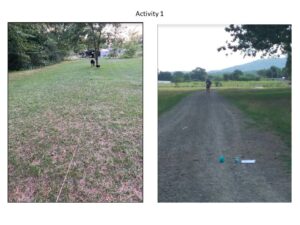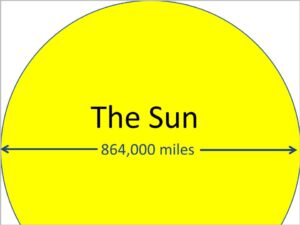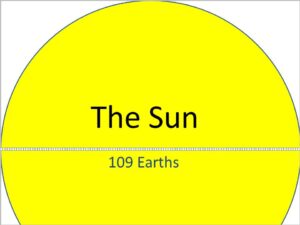<< Home … Maps … Weather … Geology >>
Space
Today, Wednesday July 8 – join the Meet at 9:00, 9:30, 10:00 or 10:30.
Check Google Classroom class for further instructions.
Due this week
- Space Activity – Activity 1 & 2
- Survey Monkey – Student Evidence
=====================
THERE IS NOT A STUDENT WORK PACKET FOR SPACE
There are two hands-on activities associated with this topic. Use the material provided to you at the beginning of the program to complete two hands-on activities.
- The first is to create a “scale model” of the Sun, Earth, and Jupiter. All three celestial objects will be made in proportion to each other (to scale). Also the distances of the objects will be to-scale.
- The second is to create a model of the “relative sizes” of the eight planets. These do not need to be placed at distances to-scale. These only need to be molded into appropriate “relative sizes.”
Space Activity one and two – complete these hands on activities. Attach photos to Google Classroom assignment.
Example photos for Activity 1
NOTE … distances are in meters NOT centimeters.
Instructions/Recap for Final Week
15:05 CASC UBM Earth-Space Science Last Day
Video Instructions for Activity 2
1:57 Space Science – Activity 2 (planets)
FOR YOUR INTEREST
IMPORTANT – A DEADLINE
You must have this Survey Monkey completed prior to Wednesday, July 8. This form is how your instructor will be able to confirm you completed all of your student work packets.
Do not launch the survey until all of your packets are complete. Have your packets organized and readily available as a reference when filling out this online form. There are a mixture of question types.
This is not a test. Rather, this requires you to TYPE various information from a given work packet into a text box.
- For example, there may be a text box for your summary of the GEOLOGY video about Iridium and the asteroid. If you watched the video and wrote down a summary in that work packet – doing this will be easy.
- As another example, you may be asked to find a piece of information on a MAP packet and type that in. The question might ask to type in one of the four types of maps we reviewed.
I do this frequently with my regular classes. I allow students to use their notes taken in class (and from reading) for some of my tests. Students who take good notes find this very easy. Students who do not take good notes often struggle with these types of tests. I don’t make ALL of my tests this way … but doing this rewards students who pay attention and genuinely attempt to complete their work. Students “winging it” often do not do well on these.
So … I am giving you notice that if your work packets are reasonably well done – this survey/form will be easy to complete.
Student Evidence of Packet Completion – Survey Monkey (AFTER all student packets are completed).
=============
Interesting space insights
Information presented below and selected videos are not required to read or watch. I will not be asking for a summary of these. I will not test you over the content of these. I will only be evaluating your Solar System models for this topic. That said, space (and space science) is truly fascinating. You may find this information as fascinating as I do. I hope you do read through these concepts and view the selected videos.
Vastness of the universe
The expanse of the universe is almost incomprehensible. Even the size of our medium-sized star and its orbiting planets is tiny in the scheme of things. We are a very small part of the Milky Way galaxy. The Sun is only one star out of an estimated 250 billion stars in the Milky Way alone. The Milky Way galaxy is only one small galaxy out of an estimated 100 billion galaxies in the universe.
- Sun – is our sun a star?
- Milky Way Galaxy – how many stars in the Milky Way are there?
- Galaxies – how many galaxies are there?
Distance of Earth to the Sun
To begin getting a grasp of the size of the universe, I like to first examine the distance of Earth to the sun? The answer is … about 95 million miles (or, 150 million km). But, this answer is a little bit difficult to fathom. So, here is how I like to explain it:
Imagine you have a newly born baby brother or sister tomorrow. Imagine that somehow that baby knows how to drive. They get a Ford F-150 … and they begin driving immediately after being born. They keep driving 24/7 … never stopping. No food, restroom breaks or fuel tank fill ups are ever required. They drive the speed limit from Poteau to Oklahoma City, back-and-forth. They never stop. By the time that baby turns 100 years old – they will have driven about the same distance as Earth to the Sun. Oh … and when you are in the sunlight … that electromagnetic wave of visible light that strikes your arm … that originated from the sun 9 minutes ago.
That distance (95 million miles) is called one AU. AU stands for astronomical unit.
Distance of the Sun to the nearest star
A star system named Alpha Centauri are the closest (three) stars to the Sun. Similar to the Sun, the Alpha Centauri triple-star system are just three stars out of 250 billion stars in the Milky Way galaxy. Assuming my math is correct … Alpha Centauri is about 250,000 times farther from us than the Sun! … and this is the closest star to us!
- Alpha Centuri AB – other than the Sun, this is the closest star to us.
- Alpha Centuri system – is a triple star system.
- 4.3 Light Years away – the star system is very far away.
Size of the Milky Way galaxy
- 100,000 Light Years – at light speed, end-to-end travel would take 100,000 years
Closest galaxy to the Milky Way
- Andromeda galaxy is the closest galaxy to our Milky Way
- The Local Group is a grouping of 20 galaxies including Andromeda and Milky Way
- A Cluster the Local Group is considered a “cluster”
- Size of the Local Group is a distance of about 10 million light years across
Clusters in the Universe
- What is a cluster – A cluster is a group of galaxies that are gravity bound together
- Examples of clusters – Wikipedia has some cool pictures of clusters
INTERESTING SELECTION OF VIDEOS
10:52 Full History of Earth in 10 Minutes
4:26 Planet Earth compared to other planets and stars in size.
4:40 What Is a Light Year??
2:47 What Are Main Sequence Stars?
4:58 The Life Cycle of Stars





